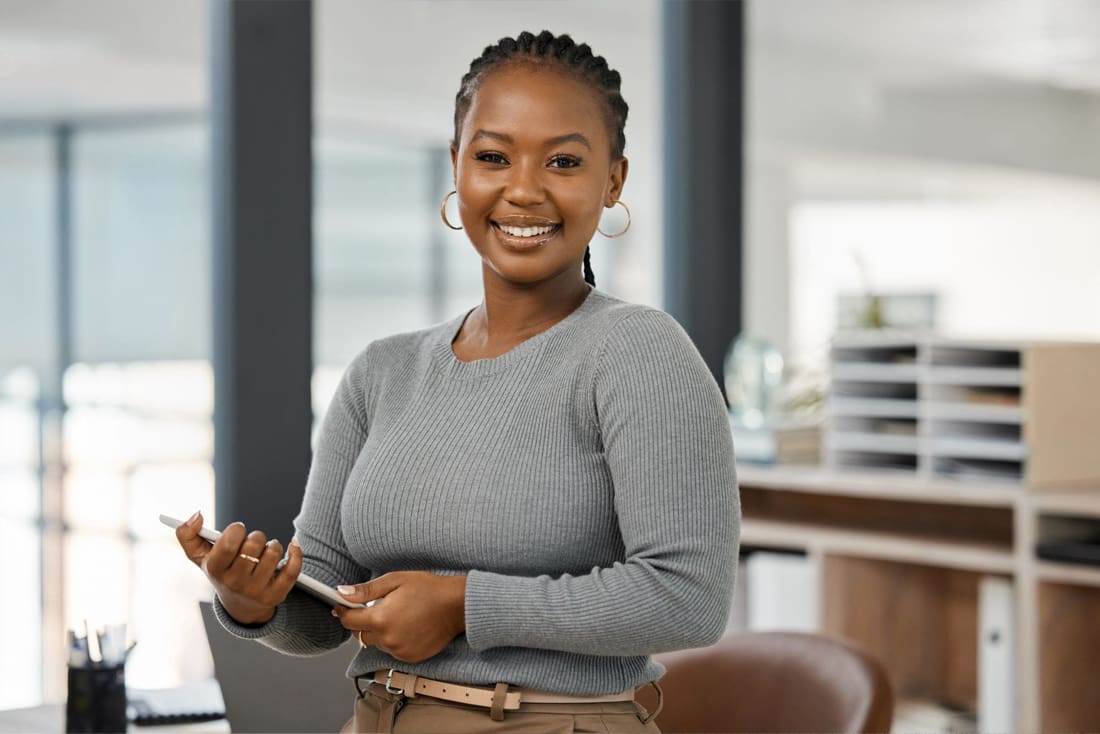
How to Read an Income Statement For Your Small Business
DISCLOSURE: THIS ARTICLE/WEBSITE USES AFFILIATE LINKS, WHICH MAY EARN A COMMISSION AT NO ADDITIONAL COST TO YOU. THIS INFLUENCES WHICH PRODUCTS WE WRITE ABOUT AND WHERE AND HOW THE PRODUCT APPEARS ON A PAGE. HOWEVER, OUR OPINIONS ARE OUR OWN AND ARE NOT INFLUENCED BY ANY FORM OF COMPENSATION.
Do you know how to read an income statement for your small business? As a small business owner, it’s important that you understand the 3 key financial statements, i.e., the balance sheet, the income statement, and the cash flow statement.
I have taken you through how you can read a balance sheet. In this article, we are shifting gears to how to read an income statement. Let’s get started!
What is an Income Statement?
An income statement is also known as a profit and loss statement (P&L). It summarizes the revenues, costs, and expenses a company incurs during a specific period, e.g., annually or quarterly. It showcases whether a company made a profit or suffered a loss in that period.
As a small business owner, it’s very important that you understand the basics of the income statement. It provides you with insights into the operational effectiveness, profitability, and potential areas for cost savings and revenue enhancement for your business.
Unlike a balance sheet, which provides a snapshot of a company’s financial position at a single point in time, the income statement reveals a dynamic overview of financial performance across time.
Key Components of an Income Statement
The income statement is divided into several sections, each offering insights into different aspects of your business’s financial performance:
- Revenue – this is the income earned from normal business operations, including sales of products or services. It’s the starting point of the income statement.
- Cost of goods sold (COGS) – these are the direct costs attributable to the production of the goods sold by a company.
- Gross profit – a critical indicator of your business’s efficiency, gross profit is the revenue remaining after deducting the cost of goods sold. It reflects the direct profitability of your sales.
- Operating expenses – These are the costs related to running the business that aren’t directly tied to production. These include rent, salaries, and marketing expenses.
- Operating profit – also known as earnings before interest and taxes (EBIT), this is the profit from operations before non-operational expenses like interest and taxes.
- Interest and taxes – This section includes interest paid on debt and taxes owed to the government.
- Net profit – the bottom line of the income statement is net profit. It indicates the total earnings after all expenses have been deducted from revenue. It’s a clear indicator of the company’s profitability.
Digitize your financial statement preparation with ZohoBooks. Read my full review of ZohoBooks here
How to Read an Income Statement: Step by Step
Reading an income statement might seem daunting, but by breaking it down into steps, you can gain valuable insights into your business’s financial health. Here’s how to do it:
Start with Revenue
The top line of the income statement is your business’s total revenue or sales for the period. This number shows how much money your business generated from its normal operations. Look at this figure to get a sense of your business’s size and growth over time.
Subtract the Cost of Goods Sold (COGS)
COGS includes direct costs like materials and labor. Subtracting COGS from your revenue gives you your gross profit, which reflects the efficiency of your production process.
Analyze Gross Profit
Your gross profit margin (gross profit divided by revenue) is a key indicator of your business’s health. A stable or growing gross margin suggests effective cost control and pricing strategies.
Examine Operating Expenses
These are the costs associated with running your business that aren’t directly tied to production. Comparing these expenses to revenue helps you understand the scalability of your business operations.
Determine Operating Profit
Also known as EBIT (Earnings Before Interest and Taxes), this number reveals the profit from your core business operations. It’s crucial for assessing the operational health of your business.
Account for Interest and Taxes
Subtracting interest and taxes from your operating profit gives you the net profit or the bottom line. This is what remains for you, the business owner, after all expenses.
Focus on the Bottom Line
Your net profit is the ultimate measure of your business’s profitability over the period. A positive net profit indicates your business is financially healthy, while a negative net profit suggests you’re making losses and require areas for improvement.
Common Misinterpretations and How to Avoid Them
When analyzing your income statement, it’s easy to fall into common pitfalls. Here are a few to watch out for:
- Confusing revenue with cash – revenue on the income statement may not equal the cash received during the period, due to the accrual basis of accounting. Ensure you understand the difference between generating sales and actually receiving cash.
- Overlooking seasonal variations – some businesses are seasonal, which can lead to misinterpretation of short-term fluctuations. Always consider the bigger picture and compare year-over-year figures.
- Ignoring non-operational income and expenses – items like one-time sales or expenses can skew your understanding of ongoing profitability. Focus on operating profit for a clearer view of your business’s regular performance.

Identifying Key Performance Indicators (KPIs)
The first step in analyzing your income statement is to identify the key performance indicators (KPIs) that are most relevant to your business. These may include:
- Gross profit margin – this is your gross profit as a percentage of total revenue. It reflects the efficiency of your production process and your ability to control direct costs. A stable or increasing gross profit margin is generally indicative of good financial health.
- Operating profit margin – also known as EBIT margin, this measures your company’s profitability from its core operations, excluding the effects of financing and taxes. It’s a pure indicator of your business’s operational efficiency.
- Net profit margin – this represents your net profit as a percentage of total revenue. It provides a comprehensive view of your overall profitability after all expenses have been accounted for.
Analyzing Operational Efficiency
Your operating expenses, when reviewed in conjunction with revenue and gross profit, can reveal much about your business’s operational efficiency. High operating expenses relative to revenue might indicate overspending in areas like marketing, administration, or rent. By identifying these areas, you can explore cost-reduction strategies without impacting product quality or customer satisfaction.
Assessing Liquidity and Solvency
While primarily the domain of the balance sheet, insights into liquidity and solvency can also be gleaned from the income statement. For instance, consistently high net profits can enhance your company’s cash reserves, improving liquidity. Similarly, a strong operating profit can indicate that your business is generating enough cash flow to meet its debt obligations, a sign of solvency.
Comparative Analysis
Comparative analysis involves examining your income statement over different periods to identify trends, patterns, and anomalies. This can be done in two ways:
- Horizontal analysis – this compares financial data over several periods to identify trends. For example, if your revenue has been growing steadily at 5% per quarter, it could signal strong market demand and effective sales strategies.
- Vertical analysis – this technique involves comparing each item on the income statement as a percentage of total revenue for a single period. It helps in understanding how each cost contributes to the overall financial picture.
Benchmarking
Benchmarking involves comparing your business’s financial metrics to those of your competitors or industry averages. This comparison can highlight areas of strength and opportunities for improvement.
If your gross margin is significantly lower than the industry average, it might indicate inefficiencies in your production process or opportunities to renegotiate supplier contracts.

Why It’s Important to Review Your Income Statement Regularly
As with anything about your business finances, it’s important to review your income statement regularly. It can help you:
- Identify trends – tracking changes over time can highlight opportunities for growth or areas needing improvement.
- Make strategic decisions – understanding your financials helps in budgeting, forecasting, and strategizing for the future.
- Prepare for financing – a clear understanding of your income statement is crucial when seeking loans or investments.
Conclusion
An income statement is more than just a document for small business owners. This financial document offers a clear picture of your company’s financial performance, from revenue generation to overall profitability. Understanding each component and regularly reviewing your income statement will help you make informed decisions that drive profitability and growth.
For in-depth analysis and guidance tailored to your specific business, consider consulting with a certified accountant or financial analyst. They can provide expert advice and help you leverage the power of your income statement to its fullest potential.
FAQ
What Is The Difference Between a Balance Sheet And An Income Statement?
An income statement shows the financial performance of a company over a specific period, typically a month, quarter, or year. It focuses on the sales/revenues, expenses, and profits or losses generated during that time. In contrast, balance sheets provide a snapshot of a business’s financial position at a particular point in time. It details a business’s assets, liabilities, and shareholders’ equity. While the income statement reflects operational efficiency and profitability, the balance sheet reveals financial health and stability.
How Often Should I Review My Income Statement?
It is advisable to review your income statement at least quarterly. This frequency allows you to identify trends, make timely adjustments to your business strategy, and address any issues before they escalate. However, reviewing it monthly can provide even more timely insights, especially for businesses in fast-changing markets or those working to improve financial performance.
My Income Statement Shows a Loss. Does This Mean My Business Is Failing?
Not necessarily. A loss can occur for various reasons, such as during a start-up phase or due to temporary economic conditions. Analyzing trends over multiple income statements and consulting with a financial advisor can provide a better context for interpreting a loss.
What Does a Negative Gross Profit Indicate?
A negative gross profit indicates that the cost of goods sold (COGS) exceeds your total revenue from sales. This situation is unsustainable over the long term and signals that your business may be pricing its products or services too low, experiencing high production costs, or facing inventory management issues. Immediate action is required to address these challenges and return to profitability.
Why Is It Important to Separate Operating and Non-Operating Expenses?
Separating operating and non-operating expenses provides a clearer view of your business’s core operational efficiency and profitability. Operating expenses are directly related to the day-to-day running of your business, while non-operating expenses, such as interest payments or one-time costs, are not directly tied to your primary business activities. By distinguishing between these, you can more accurately assess the performance of your business’s core operations.
What Should I Do If My Business Consistently Shows a Net Loss?
Consistently showing a net loss on your income statement is a signal to reevaluate your business model, pricing strategy, cost structure, and operational efficiency. Identifying the root causes of the losses is crucial. This may involve reducing unnecessary expenses, increasing prices, improving marketing efforts, or adjusting your product or service offerings. Consulting with a financial advisor or accountant can also provide valuable insights and strategies to return your business to profitability.







